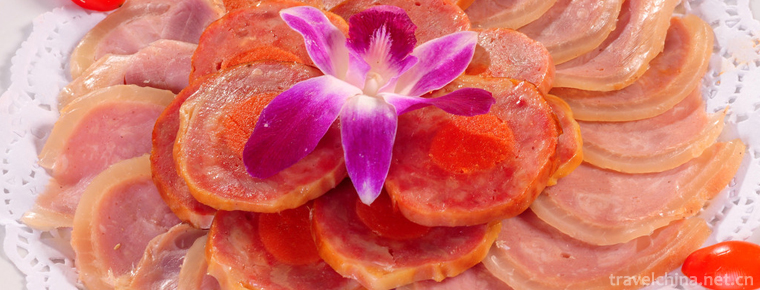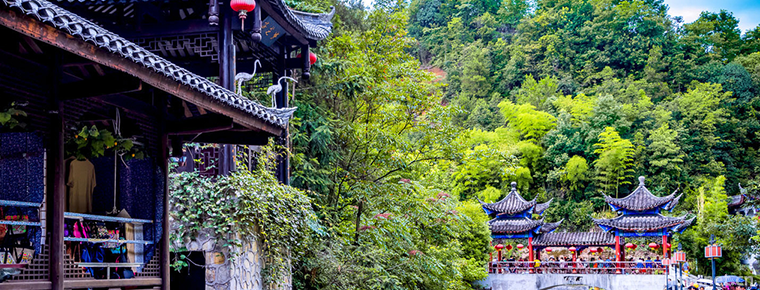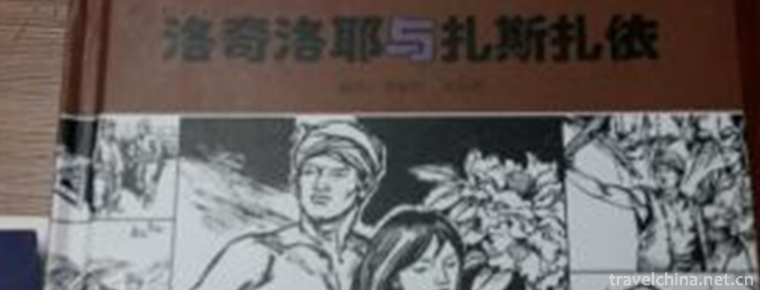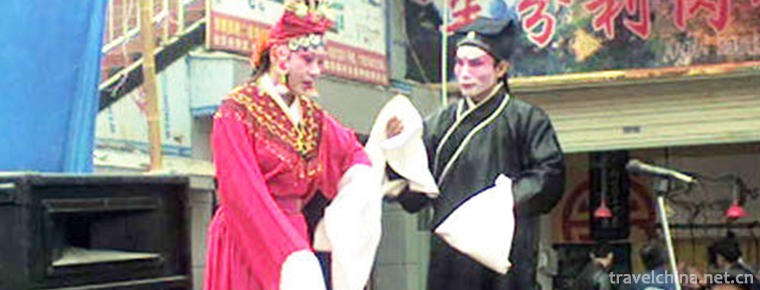Porcelain painting
Porcelain painting
Porcelain plate painting refers to a kind of planar ceramic handicraft which is manually painted and glazed with special chemical pigments on plain porcelain plate and then fired at high temperature. Porcelain paintings can be mounted or embedded in the screen for ornamental purposes. Porcelain plate painting can be traced back to Qin and Han Dynasty at the earliest, and the real meaning of "porcelain plate painting" appeared in the mid-Ming Dynasty. Since the mid-Qing Dynasty, the development of porcelain plate painting has been flourishing.
Porcelain board paintings vary in variety, including blue and white, blue and white glaze red, multicolor, plain tri-color, fighting color, pastel, ink color, light crimson color, etc. The design content covers a wide range, including characters, landscapes, flowers, insects and birds, fish and algae and auspicious patterns, while the shape system includes rectangular, circular, elliptical, multi-angle, fan and other forms.
Compared with paper and silk paintings, ceramic board paintings have stable physical and chemical properties. They are not afraid of dampness and mildew, and their colors will remain bright for decades.
Porcelain plate painting is the first batch of intangible cultural heritage in Nanchang City, which was selected into the provincial and national intangible cultural heritage list in 2008.
Historical origin
Porcelain plate painting has a long history, which can be traced back to the Qin and Han Dynasties at the earliest. In the mid-Ming Dynasty, the real meaning of the ceramic plate painting appeared. In the mid-Qing Dynasty, with the rapid development of the Qing Dynasty's ceramic art, the ceramic artists at that time devoted themselves to transplanting the Chinese painting on paper and silk to the porcelain. Therefore, the ceramic plate painting was favored by people and became an important commodity porcelain. Porcelain panel painting is becoming more and more prosperous. Whether it is enclosure screen, insert screen or hanging screen, we often see decorative ceramic plate paintings inlaid on the top. There are many varieties, such as blue and white, blue and white glaze red, multicolor, vegetable tri-color, fighting color, pastel color, ink color, light crimson color and so on. Painting and decoration cover a wide range of subjects, including characters, landscapes, flowers, insects and birds, feathers, fish and algae, auspicious patterns and so on.
Jingdezhen porcelain plate painting began in the Ming and Qing Dynasties. It has been used for decoration in screens, cabinet doors, bedsteads and so on. In the mid-Qing Dynasty, some folk artists used the method of light crimson painting in Chinese paintings to copy and create, creating a pioneer of porcelain plate painting.
Art category
Porcelain in the form of plate is the result of the continuous perfection of ceramic production technology. The appearance of ceramic plate makes the ceramic plate painting have material conditions. From the relevant information, the ceramic plate painting with flat and smooth shape and painting art form began to appear in the mid-Ming Dynasty. Porcelain plate painting is not only a kind of porcelain, but also a kind of painting. It is a new category of ceramics formed by ceramic art, which breaks away from pure craft decoration and merges into literati painting. Porcelain plate painting is one of the most popular painting styles in contemporary art and ceramics.
From ancient times to the present, there are six main reasons why porcelain plate paintings are lasting, like the older the wine is, the more fragrant it is.
Firstly, the porcelain plate painting has the beauty of smooth and smooth porcelain plate, which makes it easy for pottery artists to use porcelain as paper, wield the slightest at will, give full play to the author's painting genius, and fully display the aesthetic mood of the porcelain painting.
Secondly, porcelain plate painting is easy to express the charm and meaning of Chinese painting, which conforms to Chinese traditional aesthetic habits and tastes. The composition, line, color and artistic conception of landscape porcelain plate painting absorbed the painting style of traditional Chinese painting and branded the imprint of modern landscape painting.
Thirdly, ceramic plate painting is one of the important carriers for ceramic artists to absorb the essence of traditional Chinese painting and express the Oriental aesthetic ideal, and this expression can stand the test of time, because compared with paper and silk painting, ceramic plate painting has stable physical and chemical properties, not afraid of dampness, not afraid of mildew, as long as it does not impact, it will not damage. In addition, the color of porcelain plate painting, whether it is blue and white under glaze, red under glaze, high temperature color glaze, or pastel on glaze, ancient color, ink color, always bright, will not change color due to sunshine and water immersion, easy to collect.
Fourthly, there are various styles of porcelain panel painting, besides the common rectangle and square, there are also round, oval, fan, chicken heart, leaf shape and so on, which are convenient for home decoration. They can be hung in the living room, study, mosaic decoration of writers'furniture, or made into insert screen or enclosure screen.
Fifthly, ceramic panel painting caters to the aesthetic needs of modern people. The diversity and inclusiveness of contemporary ceramic panel painting style can not only meet the need of people to advocate classical beauty, but also suit people to pursue modern fashion taste.
Sixthly, porcelain plate painting is an important style of modern environmental design. According to the decorative needs of buildings, the area can be large or small, big as mountains, small as bowing to appreciate. In today's society, modern ceramic panel painting has become one of the preferred works of art for family environment layout.
Appreciation knowledge
Porcelain plate painting, which began in the late Qing Dynasty, is a unique painting art in China, with strong Gan cultural characteristics. Porcelain plate painting is very precise and meticulous from the choice of pictures, artistic processing, the refining of frankincense oil before drawing, the modulation of pigments, the processing of brushes to the specific steps and techniques of drawing. According to Feng Jie, a master of national arts and crafts, porcelain plate painting has more obvious basic characteristics. It not only inherits the essence of Chinese traditional painting, but also is compatible with the characteristics of Chinese ceramic art. It can not only draw realistic effects of photography and classical oil painting, but also express the artistic styles of all kinds of paintings and genres at will.
Attention should be paid to "six views" when appreciating porcelain plate paintings: first, to see whether the porcelain plate is flat or not, all the arches or skews in the middle of the porcelain plate belong to inferior products. Second, to see whether the surface of the porcelain plate is bright and clean, where the surface has shrinkage glaze, black spots, are inferior. Third, to see whether the porcelain plate is complete, all those who tap muffled voice with cracks, are inferior. Fourth, to see whether the picture of the porcelain plate is neat or not, all the pictures with glaze color falling off or rubbed traces belong to inferior products. Fifth, to see whether the painting of porcelain plate is exquisite or not, those who are rough and improper are inferior. Sixth, to see whether the firing process of porcelain plate painting is in place, all the kilns are poor, dark gray, are inferior. Porcelain plate painting needs to consider the porcelain plate, tire glaze, coloring and painting skills. If the work is well-crafted, the font is smart, fluent, and completed at one go, such works are often the style of everyone and deserve attention.
Master of inheritance
During the period of late Qing and Republic of China, there were many artists who created porcelain plate paintings in Jingdezhen, Jiangxi Province. In 1928, a traveler booked a ceramic plate painting. Wang Qi and Wang Dafan contacted with Deng Bishan, Wang Yeting, He Ren, Cheng Yiting, Bi Botao and Liu Yuqi. After each painting, many people were very surprised and liked it. They asked them to continue painting. In this way, they later set up a ceramic art club, taking the meaning of "flower, moon, life", known as the "Moon Festival", meeting every month to look at the sun, the Moon Yaji Zhushan, to draw friends, to gather friends, to discuss painting skills, known as the "Eight Friends of Pearl Mountain". "Eight Friends of Pearl Mountain" created in its heyday in the late Qing Dynasty, the Republic of China and the decades before the Cultural Revolution, leaving a small number of works, has always been a collection of ceramic collectors'dream.
First Generation: Deng Bishan (Master)
Second Generation: Wang Qi (from Deng Bishan)
The third generation: Liang Duishi (from Wang Qi), Liang Xiting (from Liang Duishi)
The fourth generation: Wu Yueshan, Zou Kunlun and Yang Zhixing.
The fifth generation: Yang Houxing (from Wuyueshan), Xu Xikui (from Yang Houxing), Jiang Genshui (from Yang Houxing)
Sixth Generation: Feng Jie (Shicheng Yang Houxing), Liang Shaoshi (Shicheng Liang Duishhi), Wang Yuelin (Shicheng Chen Xingao, Feng Jie), Li Chunmin (Shicheng Feng Jie), Zou Wu (Shicheng Zou Kunlun, Chen Xingao), Wang Yuezu (Shicheng Chen Xingao, Feng Jie), Wu Jianghua (Shicheng Xu Xikui), Wu Yulun (Shicheng Xu Xikui, Yang Houxing), Yang Ping (Shicheng Yang Houxing)
market value
Since the 1990s, the market price of porcelain plate painting has risen repeatedly, because this kind of art not only needs to be painted, but also fired twice. In addition, the texture of porcelain is prone to deformation, kiln cracking, and the success rate is very low. Therefore, it is rare to obtain high-quality products. Secondly, with its own flat, smooth and beautiful porcelain plate as the carrier of painting, it can show the vivid color, beautiful, strong aesthetic mood and unique elegant delicacy of the painting. The above composition, lines, colors and so on will not be out of shape. Moreover, the ceramic board has more stable physical and chemical properties than paper and silk, and is not afraid of dampness and mildew, and is not easy to deteriorate. Once the work is finished, the color will last forever and remain fresh all the year round.
Inheritance significance
Porcelain plate painting not only inherits the essence of Chinese traditional painting, but also is compatible with the advantages of Chinese ceramic art, is the perfect combination of painting art and ceramic art, is the crystallization of the infinite wisdom of the Chinese nation, and has an important position in the history of Chinese painting and international painting art .
The inheritance of Nanchang porcelain plate painting is not only the inheritance of internal culture, but also the concrete embodiment of traditional culture and spirit. This traditional handicraft has undergone a long process of transformation from the initial stage of attempt to the present scale of formation. Everything is constantly advancing in the process of change and development. It is impossible to remain unchanged, but how to change and how to change is a problem that needs to be explored.
In the long run, Nanchang porcelain plate painting must be industrialized in order to truly carry forward this traditional art. Combining the protection, inheritance and development of cultural industry of Nanchang porcelain plate painting, actively and extensively expanding the market of porcelain plate painting, preparing various kinds of painting exhibitions, and participating in various arts and crafts exhibitions at home and abroad, making a good impact on the "brand" of Nanchang porcelain plate painting, exploring the artistic collection value of porcelain plate painting, and relying on Nanchang porcelain plate painting, creating a cultural and collective art circle. Let the porcelain plate painting into people's life, into people's work, let more people know and understand the Nanchang ceramic plate painting, like the Nanchang ceramic plate painting, find the charm of Nanchang ceramic plate painting. Furthermore, it will be promoted to industrialize.
However, there are many obstacles in the process of industrialization. However, the profound cultural connotation and the unlimited prospects of the porcelain plate painting can not be underestimated. It is necessary for us to regard porcelain plate painting as not only an economic industry, but also a cultural industry. At the same time, we can recognize, understand, study and support it as a cultural and artistic undertaking.
The vitality and potential of cultural industry can effectively promote the rapid growth of national economy. As a growing industrial form, cultural industry is showing great potential for development and is a new growth point of modern economic development. Cultural industry has become an important pillar industry of national economy in developed countries.
As an invisible hand, culture, spirit and morality are interdependent and become the direct driving force of economic and social development.


-
Penglaige tourist area
Penglaige Scenic Area, located in Danya Mountain, northwest of Penglai City, Shandong Province, is a national AAAAA-level tourist attraction with an area of 18,500 square meters.
Views: 105 Time 2018-12-08 -
legend of butterfly lovers Liang Zhu
Legend of Liang Zhu (Legend of Liang Shanbo and Zhu Yingtai) is a sad and moving love story. It is also called four ancient Chinese folklores with Meng Jiangnu, Niulang Zhinu and White Snake Biography.
Views: 287 Time 2018-12-23 -
Tangya Tusi City Site
Tangya Tusi Town Site is located in Tangya Town, Xianfeng County, Enshi Tujia and Miao Autonomous Prefecture, Hubei Province, with its back to Xuanwu Mountain and facing Tangya River..
Views: 153 Time 2019-02-13 -
Yanzhi Mountain Forest Park
Yanzhi Mountain Forest Park is located 45 kilometers southeast of Shandan County. The Gejunma Grassland is opposite to Qilian Mountain.
Views: 103 Time 2019-02-28 -
The First Bay Scenic Area of the Yangtze River
The first bay of the Yangtze River (the first bend of the Yangtze River and the first bay of the Wanli Yangtze River): located between Shigu Town of Lijiang City in the northwest of Yunnan Province an.
Views: 149 Time 2019-03-17 -
Kaiyuan Cave Tourist Area Zibo
The karst cave in Kaiyuan is named for the cliff stone carvings in Kaiyuan period of Tang Dynasty. It is large and tall with a length of more than 1100 meters. It is divided into six halls. The natura.
Views: 126 Time 2019-03-21 -
Lodgeroye and Zaszai
Lodgeroye and Zaszai is a representative long poem of Hani poetry style, which is widely spread in all villages inhabited by Hani Biyo people in Hani Autonomous County of Mojiang. There are ten chapte.
Views: 168 Time 2019-05-15 -
Brewing Techniques of Maotai Liquor
Maotai liquor brewing technology, the local traditional handicraft technology of Maotai Town, Zunyi City, Guizhou Province, is one of the national intangible cultural heritage..
Views: 157 Time 2019-05-29 -
Zhangjiajie Yangxi Opera
Zhangjiajie Yangxi Opera originated in the middle of Qing Dynasty and has a history of more than 300 years. It belongs to Beilu Yangxi Opera. The singing feature is the singing method of "golden .
Views: 116 Time 2019-07-16 -
Taoping Qiang Village
Taoping Qiang village is located in Taoping Township, beside Zagunao River in Lixian County. Qiang village is 40 km away from Lixian City, 16 km from Wenchuan city and 139 km from Chengdu. It is a national key cultural relics protection unit and an important scenic spot in Jiuhuang line tourism circle..
Views: 129 Time 2020-11-07 -
Public education in Chengdu Giant Panda Base
From 2003 to 2016, Chengdu base received more than 100000 primary and secondary school students at home and abroad, and trained more than 800 volunteers; went to colleges and universities, communities, primary and secondary schools, kindergartens and nature .
Views: 352 Time 2020-12-13










